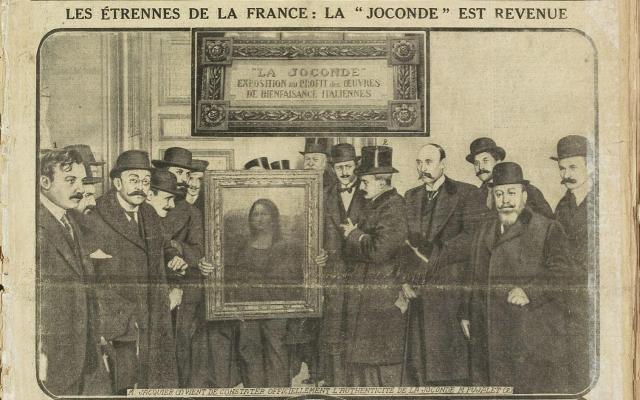KAKERA Series
2016 - Photography (Photography)
54.2H x 80W cm
Tatsuki Masaru
For the works KAKERA, Bullet Train and KAKERA, Loving God Tatsuki Masaru traveled throughout Japan to visit museums holding kakera (which translates to “fragments”) of Jomon Period potteries –Japan’s pre-history 2,300-15,000 years ago. Small and fragile, the kakera were donated by farmers who had found them in their fields, or by archeologists, and then wrapped in newspapers and stored away. Today they sit quietly on the shelves of museums, unknown to people. Tatsuki pulled the kakera out to photograph them with the wrapping newspaper backdrop, giving light to the neglected objects. Spanning from 1940s to 1980s, the wrapping newspapers record the time when the kakera were found and archived. In Bullet Train , the newspaper highlights the surprise of inspectors from 40 some countries to the encounter of the Tokaido Shinkansen, the oldest bullet train in Japan and today the most travelled high-speed rail route worldwide by far. Tatsuki’s photographs unfold a part of history of modern Japan while engaging broader discussion around the conservation and restitution of artifacts and cultural heritage.
Tatsuki Masaru became an independent photographer in the late 1990s after studying under Kyoji Takahashi, photographer mainly familiar to Japanese audiences for his commercial and fashion photography but also an independent image-maker producing photos, films and installations. Exploring folkloric myths and the reality of people’s life in Japan, each of Tatsuki’s photography series is the result of a long-term research and engagement with his subject matter. As such since 2006, Tatsuki Masaru has been visiting the Tohoku Region regularly, well before the 2011 earthquake devastated the region.
Colors:
Related works sharing similar palette
» see more

© » ARTS EQUATOR
Weekly Southeast Asia Radar: Rashomon in KL; Burmese cartooning pioneers | ArtsEquator Thinking and Talking about Arts and Culture in Southeast Asia ArtsEquator Radar TRBANPHOTO March 5, 2020 ArtsEquator’s Southeast Asia Radar features articles and posts about arts and culture in Southeast Asia, drawn from local and regional websites and publications – aggregated content from outside sources, so we are exposed to a multitude of voices in the region...

© » ARTS EQUATOR
Weekly Picks: Indonesia (9 - 15 July 2018) | ArtsEquator Thinking and Talking about Arts and Culture in Southeast Asia Indonesia July 9, 2018 Top Picks of Indonesia art events in Bali, Yogyakarta and Jakarta from 9 – 15 July 2018 Titian Art Space in Bali presents the exhibition Mokoh for the house of Mondo ...

© » ART & OBJECT
7 Shocking Incidents of Mona Lisa Vandalism and Theft | Art & Object Skip to main content Subscribe to our free e-letter! Webform Your Email Address Role Art Collector/Enthusiast Artist Art World Professional Academic Country USA Afghanistan Albania Algeria American Samoa Andorra Angola Anguilla Antarctica Antigua & Barbuda Argentina Armenia Aruba Ascension Island Australia Austria Azerbaijan Bahamas Bahrain Bangladesh Barbados Belarus Belgium Belize Benin Bermuda Bhutan Bolivia Bosnia & Herzegovina Botswana Bouvet Island Brazil British Indian Ocean Territory British Virgin Islands Brunei Bulgaria Burkina Faso Burundi Cambodia Cameroon Canada Canary Islands Cape Verde Caribbean Netherlands Cayman Islands Central African Republic Ceuta & Melilla Chad Chile China Christmas Island Clipperton Island Cocos (Keeling) Islands Colombia Comoros Congo - Brazzaville Congo - Kinshasa Cook Islands Costa Rica Croatia Cuba Curaçao Cyprus Czechia Côte d’Ivoire Denmark Diego Garcia Djibouti Dominica Dominican Republic Ecuador Egypt El Salvador Equatorial Guinea Eritrea Estonia Eswatini Ethiopia Falkland Islands Faroe Islands Fiji Finland France French Guiana French Polynesia French Southern Territories Gabon Gambia Georgia Germany Ghana Gibraltar Greece Greenland Grenada Guadeloupe Guam Guatemala Guernsey Guinea Guinea-Bissau Guyana Haiti Heard & McDonald Islands Honduras Hong Kong SAR China Hungary Iceland India Indonesia Iran Iraq Ireland Isle of Man Israel Italy Jamaica Japan Jersey Jordan Kazakhstan Kenya Kiribati Kosovo Kuwait Kyrgyzstan Laos Latvia Lebanon Lesotho Liberia Libya Liechtenstein Lithuania Luxembourg Macao SAR China Madagascar Malawi Malaysia Maldives Mali Malta Marshall Islands Martinique Mauritania Mauritius Mayotte Mexico Micronesia Moldova Monaco Mongolia Montenegro Montserrat Morocco Mozambique Myanmar (Burma) Namibia Nauru Nepal Netherlands Netherlands Antilles New Caledonia New Zealand Nicaragua Niger Nigeria Niue Norfolk Island Northern Mariana Islands North Korea North Macedonia Norway Oman Outlying Oceania Pakistan Palau Palestinian Territories Panama Papua New Guinea Paraguay Peru Philippines Pitcairn Islands Poland Portugal Puerto Rico Qatar Romania Russia Rwanda Réunion Samoa San Marino Saudi Arabia Senegal Serbia Seychelles Sierra Leone Singapore Sint Maarten Slovakia Slovenia Solomon Islands Somalia South Africa South Georgia & South Sandwich Islands South Korea South Sudan Spain Sri Lanka St...
Related works found in the same semantic group
» see more

© » KADIST
YOUNG-HAE CHANG HEAVY INDUSTRIES
2010To the syncopations of a jazzy soundtrack, Korean words in white against a black background flashes between an English dialogue in black text against white ground...

© » KADIST
Jesús Hdez-Güero
2014Minutos de odio contra sí mismo (Minutes of hate against itself) is a simple and powerful work about the political situation in Venezuela, replacing the stars on the flag with bullet holes...

© » KADIST
Lawrence Abu Hamdan
2016In May 2014, Israeli soldiers shot and killed two teenagers, Nadeem Nawara and Mohamad Abu Daher in occupied Palestine (West Bank)...

© » STEVE LAMBERT
Art and Fear of Propaganda - Steve Lambert Art and Fear of Propaganda - Steve Lambert Steve Lambert has a book coming out Art Works News Writing About Steve Contact Resume Now Newsletter Book Creative Commons BY-NC-SA November 2021 Work Center for Artistic Activism , NeON Festival , Scotland , writing Yes, you should worry about art becoming propaganda – but probably not for the reasons you’d imagine...

